原文地址:http://android-developers.blogspot.jp/2015/09/android-studio-14.html
翻译部分内容:
Posted by, Jamal Eason, Product Manager, Android
今天我们发布了AndroidStudio1.4稳定版。 Most of the work and enhancements for Android Studio 1.4 are under the hood. However we have a handful of new features that we hope you enjoy and integrate into your workflow.
注意,一些新特性 (比如vector assets)需要在项目中使用Gradle Plugin 1.4. beta版的Gradle plugin (1.4.0-beta3 )现在可以到jcenter上下载,其最终版将在几周内推出。
Android Studio 1.4 的新特性
Design Tools(设计工具)
- Vector Assets (矢量资源?)
从 API 21开始, 你可以使用 Vector Drawables(矢量图形) 作为图片资源. 对大部分应用来说, 使用 VectorDrawables 可以减少你需要维护的各种分辨率图片的数量, 并且无论你的APP支持何种屏幕分辨率,其都可以提供清晰的图像.
With Android Studio 1.4,我们简化了导入SVG图片和Material icons(材料图标)的流程. 如果你在project structure中将你的Gradle Android plugin升级到1.4.0-beta3 (或更高) 或者在
build.gradle文件中使用 ( 'com.android.tools.build:gradle:1.4.0-beta3' ), 要使用Vector Asset Studio,你可以右键点击你工程的res/drawable文件夹,在菜单中选择New → Vector Asset.
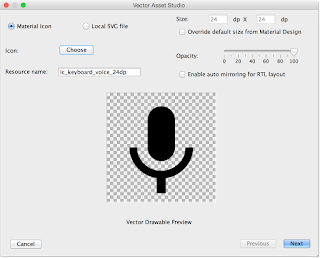
We are also excited to offer backwards compatibility for your vector assets in Android Studio 1.4. Once you have a vectorDrawable image in your res/drawable, the Gradle plugin will automatically generate raster PNG images for API level 20 and below during build time. This means you only need to update and maintain your vector asset for your app project and Android Studio can take care of image conversion process. Note, it is still best practice to create density dependent launcher icons in your res/mipmap folder. Learn more by watching the DevByte video on the new Vector Asset Studio tool.
allowfullscreen="" frameborder="0" height="315" src="https://www.youtube.com/embed/8e3I-PYJNHg" width="560" style="box-shadow: rgb(153, 153, 153) 3px 10px 18px 1px; display: block; margin-bottom: 1em; margin-left: 50px;">
- Theme Editor(主题编辑器)
We understand that managing your app theme and style can be a bit complex. With Android Studio 1.4, we are releasing a preview of the Theme Editor to help with this task. This first version of the Theme Editor is focused on editing and updating the material theme colors (
colors.xml) in your app project. In future releases, we will cover more attributes of your app theme and styles files. To access the editor, navigate from top level menu Tools → Android → Theme Editor. - Project Templates(项目模板)
We know many of you use the New Project Wizard app templates to start a new app project or to quickly add an activity to an existing app. To help with the visual design of your apps, we updated the app templates to include theAndroid Design Support Library alongside the AppCompat Support library.
From the template wizard you can start projects with a basic blank template with a floating action button or start from a range of user interface components such as the navigation drawer, or AppBar with scrolling view. We also re-introduced the empty app template for those who want minimum code generation when adding an activity to your project.
With Android Studio 1.4, you can also validate your apps on the new Nexus 5X and Nexus 6P screen sizes.
Performance Monitors(性能监视器)
- GPU Rendering Monitor(GPU渲染监视器)
Now it is possible to quickly inspect the GPU rendering performance of your app. To enable GPU monitoring, make sure you turn on monitoring for your Android hardware device or emulator under Setting → Developer Options → Profile GPU rendering → In adb shell dumpsys gfxinfo . To learn more about the GPU rendering results, check out thedeveloper documentation.
- Network Monitor(网络监视器)
With Android Studio 1.4, you can also monitor the network usage of your app. With the monitor you can track the transmit and receive rates of your app over time.
Developer Services(开发服务)
- Firebase
It is now even easier to add a Firebase mobile backend to your Android app. Firebase includes data storage, user authentication, static hosting, and more. To access the feature, navigate from the top level menu and select File → Project Structure → Cloud. Learn more about Firebase in this tutorial.
Whats Next
For current developers on Android Studio, you can check for updates from the navigation menu (Help → Check for Update[Windows/Linux] , Android Studio → Check for Updates [OS X]) . For new users, you can learn more about Android Studio on theproduct overview page or download the stable version from the Android Studio download site.
We welcome feedback on how we can help you. Connect with the Android developer tools team on Google+.
-----------------------------兹萆是分割線--------------------------------------
英文原文:
Posted by, Jamal Eason, Product Manager, Android
Today we are releasing the 1.4 update to the Android Studio stable release channel. Most of the work and enhancements for Android Studio 1.4 are under the hood. However we have a handful of new features that we hope you enjoy and integrate into your workflow.
Note that some of new features (e.g. vector assets) require you to use Gradle Plugin 1.4 for your app project. The beta version of the Gradle plugin (1.4.0-beta3 ) is available today on jcenter with the final version coming in the next few weeks.
New Features in Android Studio 1.4
Design Tools
- Vector Assets
Starting with API 21, you can use Vector Drawables for image assets. For most apps, using VectorDrawables decreases the amount of density dependent drawables you need to maintain, and will also give you sharp image assets regardless of the screen device densities your app supports.
With Android Studio 1.4, we are making the process of importing SVG images or Material icons much easier. If you update your Gradle Android plugin to 1.4.0-beta3 (or higher) in the project structure dialogue or your project
build.gradlefile ( 'com.android.tools.build:gradle:1.4.0-beta3' ), you can now use the new Vector Asset Studio by right-clicking the res/drawable folder in your project and selecting New → Vector Asset from the content menu.

We are also excited to offer backwards compatibility for your vector assets in Android Studio 1.4. Once you have a vectorDrawable image in your res/drawable, the Gradle plugin will automatically generate raster PNG images for API level 20 and below during build time. This means you only need to update and maintain your vector asset for your app project and Android Studio can take care of image conversion process. Note, it is still best practice to create density dependent launcher icons in your res/mipmap folder. Learn more by watching the DevByte video on the new Vector Asset Studio tool.
allowfullscreen="" frameborder="0" height="315" src="https://www.youtube.com/embed/8e3I-PYJNHg" width="560" style="box-shadow: rgb(153, 153, 153) 3px 10px 18px 1px; display: block; margin-bottom: 1em; margin-left: 50px;">
- Theme Editor
We understand that managing your app theme and style can be a bit complex. With Android Studio 1.4, we are releasing a preview of the Theme Editor to help with this task. This first version of the Theme Editor is focused on editing and updating the material theme colors (
colors.xml) in your app project. In future releases, we will cover more attributes of your app theme and styles files. To access the editor, navigate from top level menu Tools → Android → Theme Editor. - Project Templates
We know many of you use the New Project Wizard app templates to start a new app project or to quickly add an activity to an existing app. To help with the visual design of your apps, we updated the app templates to include theAndroid Design Support Library alongside the AppCompat Support library.
From the template wizard you can start projects with a basic blank template with a floating action button or start from a range of user interface components such as the navigation drawer, or AppBar with scrolling view. We also re-introduced the empty app template for those who want minimum code generation when adding an activity to your project.
With Android Studio 1.4, you can also validate your apps on the new Nexus 5X and Nexus 6P screen sizes.
Performance Monitors
- GPU Rendering Monitor
Now it is possible to quickly inspect the GPU rendering performance of your app. To enable GPU monitoring, make sure you turn on monitoring for your Android hardware device or emulator under Setting → Developer Options → Profile GPU rendering → In adb shell dumpsys gfxinfo . To learn more about the GPU rendering results, check out thedeveloper documentation.
- Network Monitor
With Android Studio 1.4, you can also monitor the network usage of your app. With the monitor you can track the transmit and receive rates of your app over time.
Developer Services
- Firebase
It is now even easier to add a Firebase mobile backend to your Android app. Firebase includes data storage, user authentication, static hosting, and more. To access the feature, navigate from the top level menu and select File → Project Structure → Cloud. Learn more about Firebase in this tutorial.
Whats Next
For current developers on Android Studio, you can check for updates from the navigation menu (Help → Check for Update[Windows/Linux] , Android Studio → Check for Updates [OS X]) . For new users, you can learn more about Android Studio on theproduct overview page or download the stable version from the Android Studio download site.
We welcome feedback on how we can help you. Connect with the Android developer tools team on Google+.
 Android Studio 1.4 版本发布及新特性介绍
Android Studio 1.4 版本发布及新特性介绍





 Android Studio 1.4 正式发布,新增设计工具如矢量资源导入、主题编辑器、项目模板、性能监视器等功能。包括矢量资产导入简化、主题颜色编辑、新应用模板、GPU 渲染监控、网络使用监测等特性,为开发者带来更高效便捷的开发体验。
Android Studio 1.4 正式发布,新增设计工具如矢量资源导入、主题编辑器、项目模板、性能监视器等功能。包括矢量资产导入简化、主题颜色编辑、新应用模板、GPU 渲染监控、网络使用监测等特性,为开发者带来更高效便捷的开发体验。



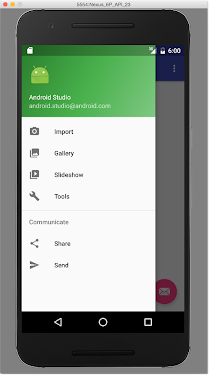
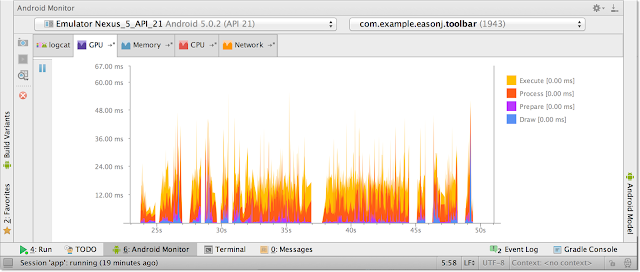
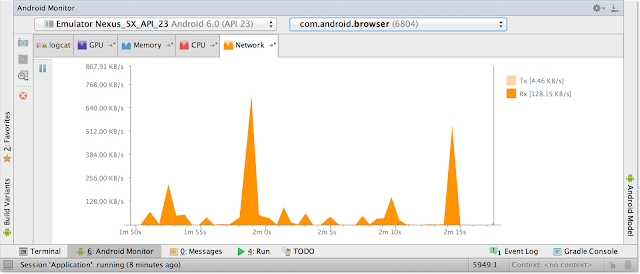
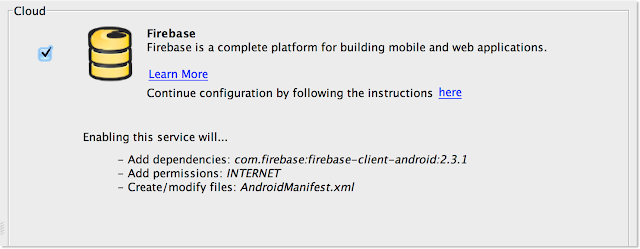
















 1904
1904

 被折叠的 条评论
为什么被折叠?
被折叠的 条评论
为什么被折叠?








